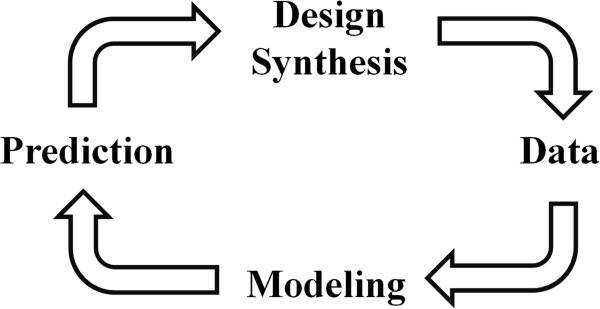Figure 5.

The iterative refinement cycle through which experience is utilized to increase the probability of success in coming series of compounds. Compounds are synthesized in a project and subjected to assays and animal tests, which generate data that indicate the likelihood for a compound to be functional as a drug. The data is used to create statistical mathematical models that describe the connection between chemical structure and expected behavior of the compounds. Such models may be directed to compound activities on multiple targets, to ADME properties and toxicity, and include approaches such as QSAR and proteochemometric modeling. The models may be based on the data developed within the project, as well as on public data and data from earlier projects. The model are used to predict the behavior of novel structures, based on which the most promising in the next series to be synthesized will be based on. Over time the models become more and more predictive when the process is iterated, which will increase the likelihood of finding suited compounds. The entire process is implemented on a broad systematic scale among the industry under the name ‘predictive modeling’.
